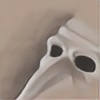HOME | DD
 Giant-Blue-Anteater — Anthropomundus: Reef Baron
Giant-Blue-Anteater — Anthropomundus: Reef Baron

#posthuman #anthropomundus
Published: 2018-07-14 23:28:36 +0000 UTC; Views: 2384; Favourites: 27; Downloads: 2
Redirect to original
Description
For hundreds of millennia, humans have sworn they found a mysterious monster from the seas wash up on the shore, one never-before-seen, one sure to captivate the human imagination, one that would feature in tales retold, in segments of local news broadcasts, and in dedicated corners on the Internet to cryptozoology. The experts, however, will then quickly point out that they were in fact the rotting remains of what are, in fact, known species.On Anthropomundus, however, any strange beast, ultimate descendants of credulous ancestors, washing ashore is definitely not fake news. If one finds a two-meter creature of delphine appearance with a down-turned crest sprouting from its forehead and a protuberant nose, they would have found the body of a former reef baron (Bigliocetus braggadocius). In life, it was, as its name suggests, the boss of the algae-reef within its range. They would either chase prey in the water column or, aided by its narrow eyes, try to search and pry prey out of rock crevices. As in other bulbocipitoids, the aforementioned crest consists mostly of bone and is a product of sexual selection by females, who lack this feature, in addition to having slightly shorter noses. What's most notable, however, is that it has the smallest hind limbs of the whole superfamily; given a few million years, they could be lost entirely, whereas curiously they remained in its other relatives, including its closest, the burnt goblin dolphin (Burnsocetus excellens), in the 25 million years since the inception of M. progenitor.
What's more, it is the most feared customer of the varying cleaner porpoises that reside in the algae-reefs of its range, for it may occasionally make a meal of them when they complete their service, clamping down on them before they exit its mouth, going away with not only a clean mouth and gills, but a free meal as well. Those that try to cheat are more likely to meet this fate. However, this dirty behavior also ends up catching impostor species of cleaner porpoise that mimic the genuine ones but make their living through treacherously feeding on the healthy tissue of their "clients."
Related content
Comments: 4

Man, these just keep getting better and better!
Can’t wait to see what (who) is next!
👍: 0 ⏩: 1

This was going to be my last one for this clade. However, along the way, I thought about making two more: a more basal type and an even more derived type.
👍: 0 ⏩: 0


















